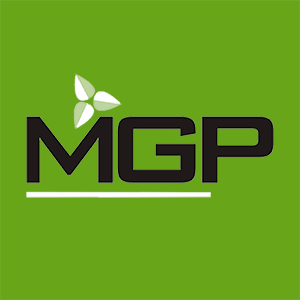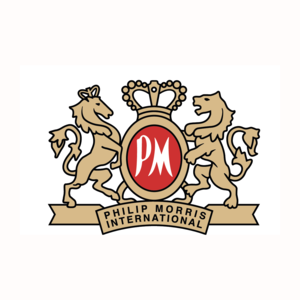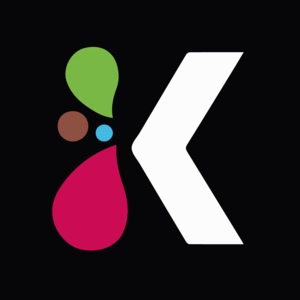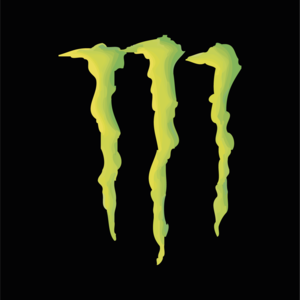
Constellation Brands (STZ)
We’re cautious of Constellation Brands. Not only are its sales cratering but also its low returns on capital suggest it struggles to generate profits.― StockStory Analyst Team
1. News
2. Summary
Why We Think Constellation Brands Will Underperform
With a presence in more than 100 countries, Constellation Brands (NYSE:STZ) is a globally renowned producer and marketer of beer, wine, and spirits.
- Projected sales decline of 6.3% for the next 12 months points to an even tougher demand environment ahead
- Flat sales over the last three years suggest it must innovate and find new ways to grow
- On the bright side, its impressive free cash flow profitability enables the company to fund new investments or reward investors with share buybacks/dividends, and its improved cash conversion implies it’s becoming a less capital-intensive business


Constellation Brands doesn’t measure up to our expectations. More profitable opportunities exist elsewhere.
Why There Are Better Opportunities Than Constellation Brands
High Quality
Investable
Underperform
Why There Are Better Opportunities Than Constellation Brands
Constellation Brands’s stock price of $140.25 implies a valuation ratio of 11.7x forward P/E. Constellation Brands’s valuation may seem like a bargain, especially when stacked up against other consumer staples companies. We remind you that you often get what you pay for, though.
Cheap stocks can look like a great deal at first glance, but they can be value traps. They often have less earnings power, meaning there is more reliance on a re-rating to generate good returns - an unlikely scenario for low-quality companies.
3. Constellation Brands (STZ) Research Report: Q3 CY2025 Update
Beer, wine, and spirits company Constellation Brands (NYSE:STZ) reported Q3 CY2025 results topping the market’s revenue expectations, but sales fell by 15% year on year to $2.48 billion. Its non-GAAP profit of $3.63 per share was 6.5% above analysts’ consensus estimates.
Constellation Brands (STZ) Q3 CY2025 Highlights:
- Revenue: $2.48 billion vs analyst estimates of $2.47 billion (15% year-on-year decline, 0.5% beat)
- Adjusted EPS: $3.63 vs analyst estimates of $3.41 (6.5% beat)
- Adjusted EBITDA: $998.8 million vs analyst estimates of $968.2 million (40.3% margin, 3.2% beat)
- Management lowered its full-year organic revenue growth and adjusted EPS guidance
- Operating Margin: 35.2%, up from -42.1% in the same quarter last year
- Free Cash Flow Margin: 25.6%, down from 29.3% in the same quarter last year
- Organic Revenue fell 8% year on year vs analyst estimates of 9.6% declines (155.1 basis point beat)
- Market Capitalization: $25.07 billion
Company Overview
With a presence in more than 100 countries, Constellation Brands (NYSE:STZ) is a globally renowned producer and marketer of beer, wine, and spirits.
The company was founded in 1945 by Marvin Sands, originally selling bulk wine to bottlers in the eastern United States. Since then, it’s evolved into a beverage industry powerhouse by acquiring numerous brands.
Today, Constellation Brands boasts a diverse and impressive portfolio of labels including Corona Extra and Modelo Especial in beer, Kim Crawford and Meiomi in wine, and Svedka Vodka and Casa Noble Tequila in spirits. These brands cater to various consumer tastes and preferences, providing a broad spectrum of high-quality options.
Beyond its core brands, Constellation Brands is recognized for pioneering new trends and categories, such as premium imported beers, craft spirits, and ready-to-drink cocktails. It was also the first Fortune 500 company and major alcoholic beverage maker to invest in a marijuana business (Canopy Growth in 2017), a bold move speaking to the company’s corporate culture.
The company places a strong emphasis on premiumization, offering high-quality products that often command higher price points. Given its sheer size, Constellation Brands has a robust global presence, and this extensive reach enables it to tap into diverse international markets and cater to a wide range of consumer tastes, making it a recognized and trusted name worldwide.
4. Beverages, Alcohol, and Tobacco
These companies' performance is influenced by brand strength, marketing strategies, and shifts in consumer preferences. Changing consumption patterns are particularly relevant and can be seen in the rise of cannabis, craft beer, and vaping or the steady decline of soda and cigarettes. Companies that spend on innovation to meet consumers where they are with regards to trends can reap huge demand benefits while those who ignore trends can see stagnant volumes. Finally, with the advent of the social media, the cost of starting a brand from scratch is much lower, meaning that new entrants can chip away at the market shares of established players.
Competitors include Anheuser-Busch Inbev (NYSE:BUD), Boston Beer (NYSE:SAM), and Molson Coors (NYSE:TAP) along with international companies such as Asahi, Carlsberg, and Heineken.
5. Revenue Growth
Examining a company’s long-term performance can provide clues about its quality. Any business can put up a good quarter or two, but many enduring ones grow for years.
With $9.62 billion in revenue over the past 12 months, Constellation Brands is one of the larger consumer staples companies and benefits from a well-known brand that influences purchasing decisions. However, its scale is a double-edged sword because there are only so many big store chains to sell into, making it harder to find incremental growth. To expand meaningfully, Constellation Brands likely needs to tweak its prices, innovate with new products, or enter new markets.
As you can see below, Constellation Brands struggled to increase demand as its $9.62 billion of sales for the trailing 12 months was close to its revenue three years ago. This shows demand was soft, a rough starting point for our analysis.
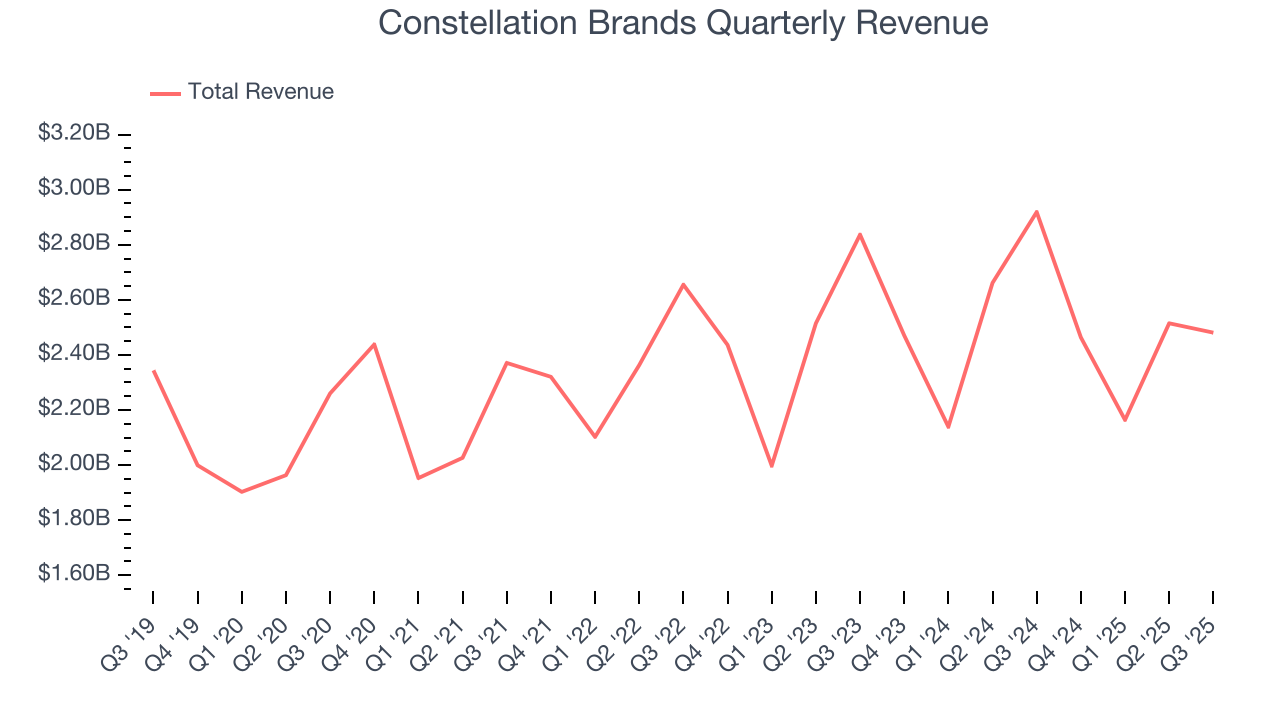
This quarter, Constellation Brands’s revenue fell by 15% year on year to $2.48 billion but beat Wall Street’s estimates by 0.5%.
Looking ahead, sell-side analysts expect revenue to decline by 6.1% over the next 12 months, a deceleration versus the last three years. This projection is underwhelming and implies its products will see some demand headwinds.
6. Organic Revenue Growth
When analyzing revenue growth, we care most about organic revenue growth. This metric captures a business’s performance excluding one-time events such as mergers, acquisitions, and divestitures as well as foreign currency fluctuations.
The demand for Constellation Brands’s products has barely risen over the last eight quarters. On average, the company’s organic sales have been flat. 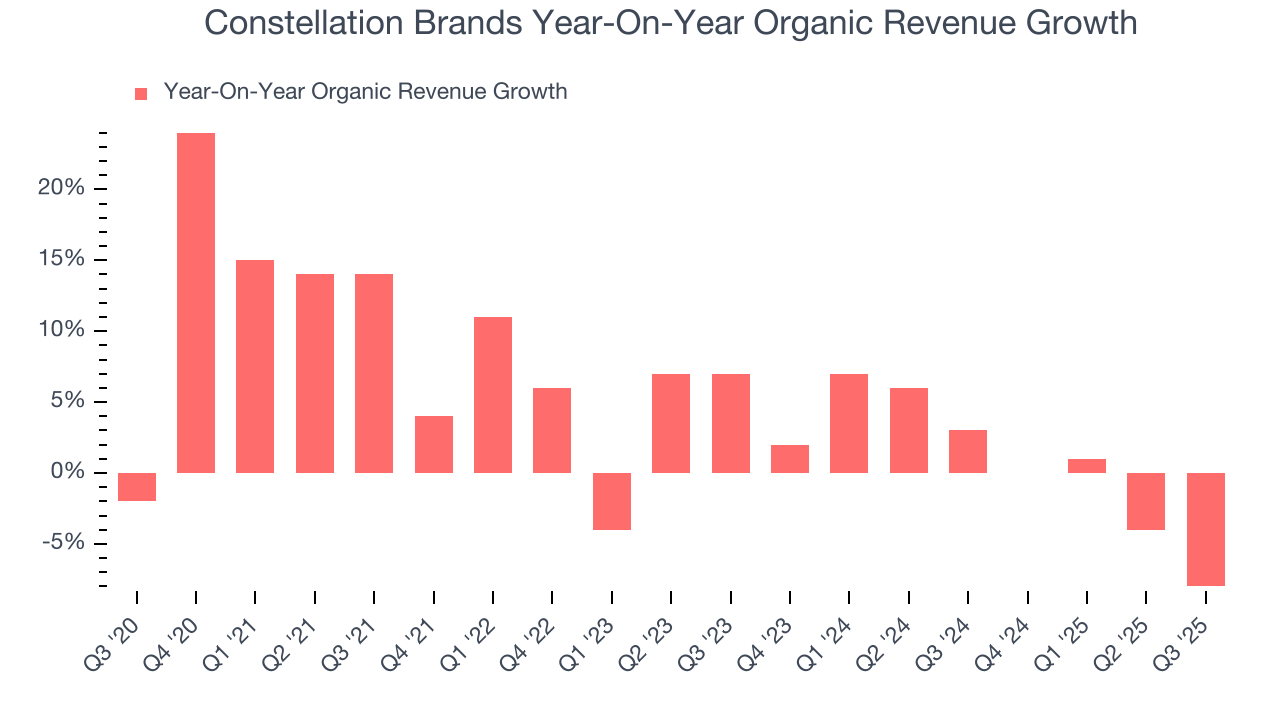
In the latest quarter, Constellation Brands’s organic sales fell by 8% year on year. This decline was a reversal from its historical levels. We’ll keep a close eye on the company to see if this turns into a longer-term trend.
7. Gross Margin & Pricing Power
Constellation Brands has great unit economics for a consumer staples company, giving it ample room to invest in areas such as marketing and talent to grow its brand. As you can see below, it averaged an excellent 51.6% gross margin over the last two years. That means Constellation Brands only paid its suppliers $48.40 for every $100 in revenue. 
This quarter, Constellation Brands’s gross profit margin was 52.8%, in line with the same quarter last year and exceeding analysts’ estimates by 3.4%. Zooming out, the company’s full-year margin has remained steady over the past 12 months, suggesting its input costs (such as raw materials and manufacturing expenses) have been stable and it isn’t under pressure to lower prices.
8. Operating Margin
Constellation Brands has been an efficient company over the last two years. It was one of the more profitable businesses in the consumer staples sector, boasting an average operating margin of 17%. This result isn’t surprising as its high gross margin gives it a favorable starting point.
Looking at the trend in its profitability, Constellation Brands’s operating margin rose by 12 percentage points over the last year, showing its efficiency has meaningfully improved.
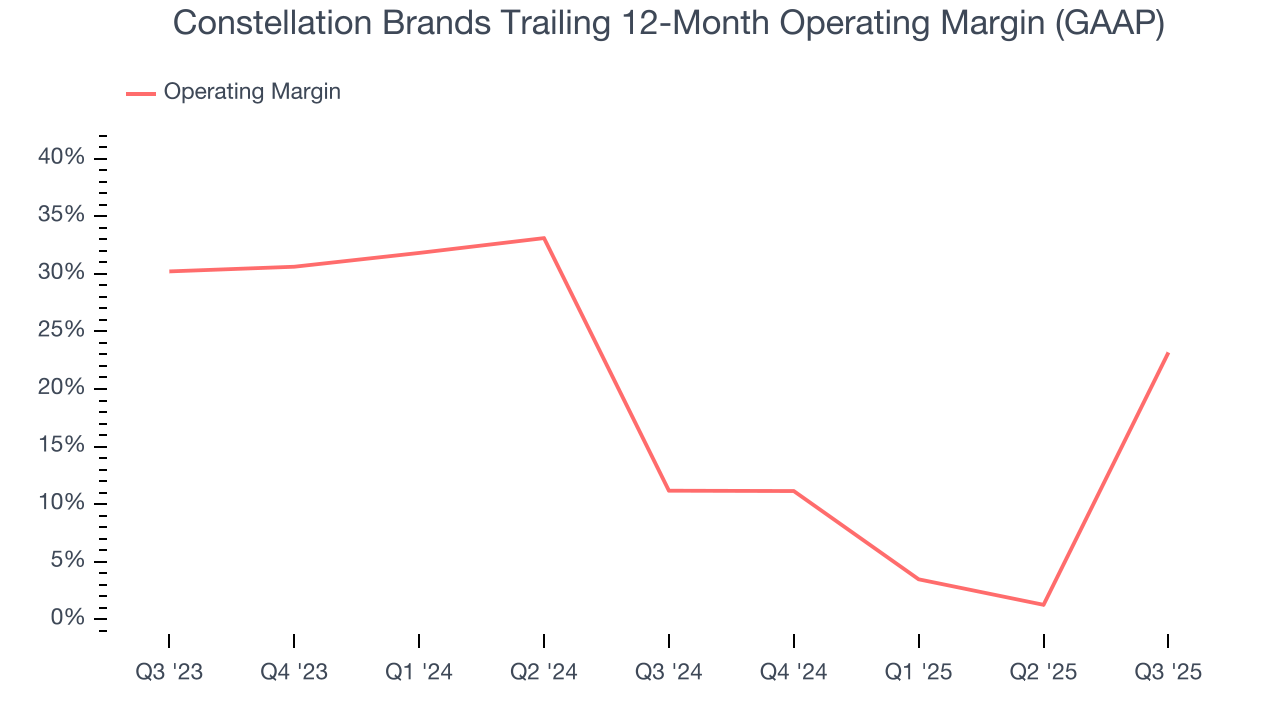
This quarter, Constellation Brands generated an operating margin profit margin of 35.2%, up 77.3 percentage points year on year. The increase was solid, and because its operating margin rose more than its gross margin, we can infer it was more efficient with expenses such as marketing, and administrative overhead.
9. Earnings Per Share
Revenue trends explain a company’s historical growth, but the change in earnings per share (EPS) points to the profitability of that growth – for example, a company could inflate its sales through excessive spending on advertising and promotions.
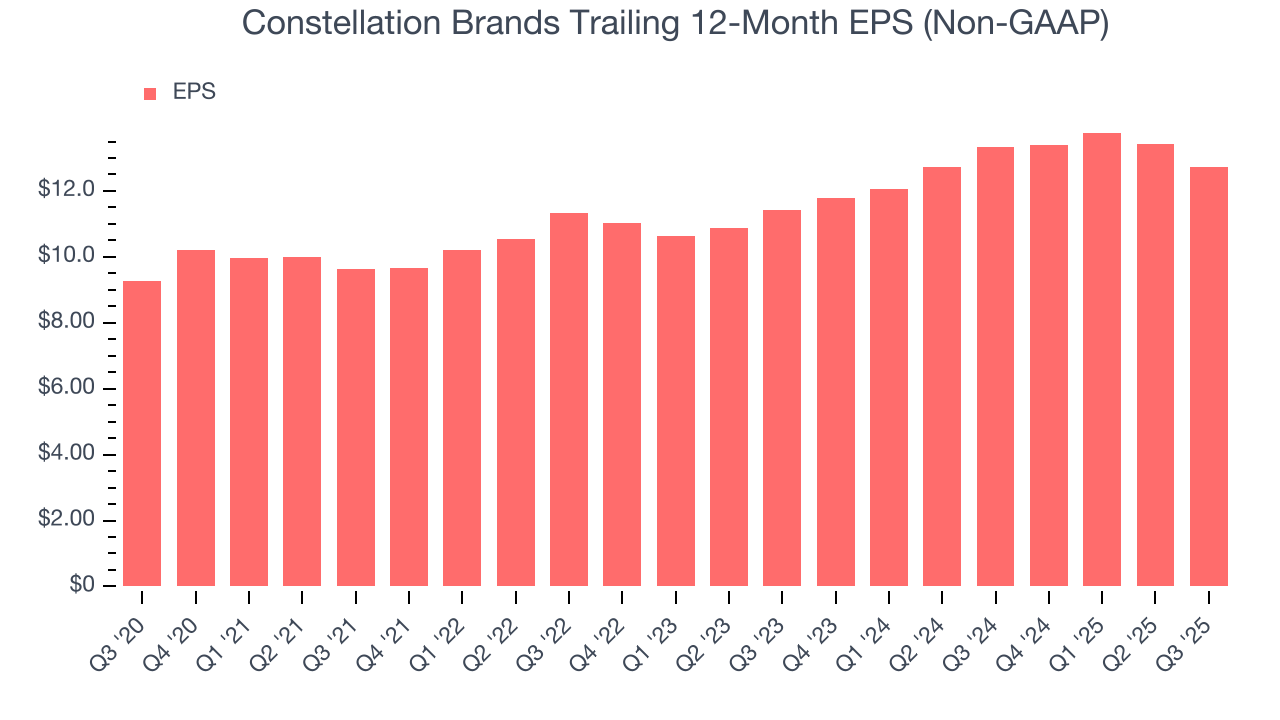
In Q3, Constellation Brands reported adjusted EPS of $3.63, down from $4.32 in the same quarter last year. Despite falling year on year, this print beat analysts’ estimates by 6.5%. Over the next 12 months, Wall Street expects Constellation Brands’s full-year EPS of $12.73 to shrink by 5.7%.
10. Cash Is King
Free cash flow isn't a prominently featured metric in company financials and earnings releases, but we think it's telling because it accounts for all operating and capital expenses, making it tough to manipulate. Cash is king.
Constellation Brands has shown terrific cash profitability, driven by its lucrative business model that enables it to reinvest, return capital to investors, and stay ahead of the competition. The company’s free cash flow margin was among the best in the consumer staples sector, averaging 17.6% over the last two years.
Taking a step back, we can see that Constellation Brands’s margin expanded by 3.1 percentage points over the last year. This is encouraging because it gives the company more optionality.
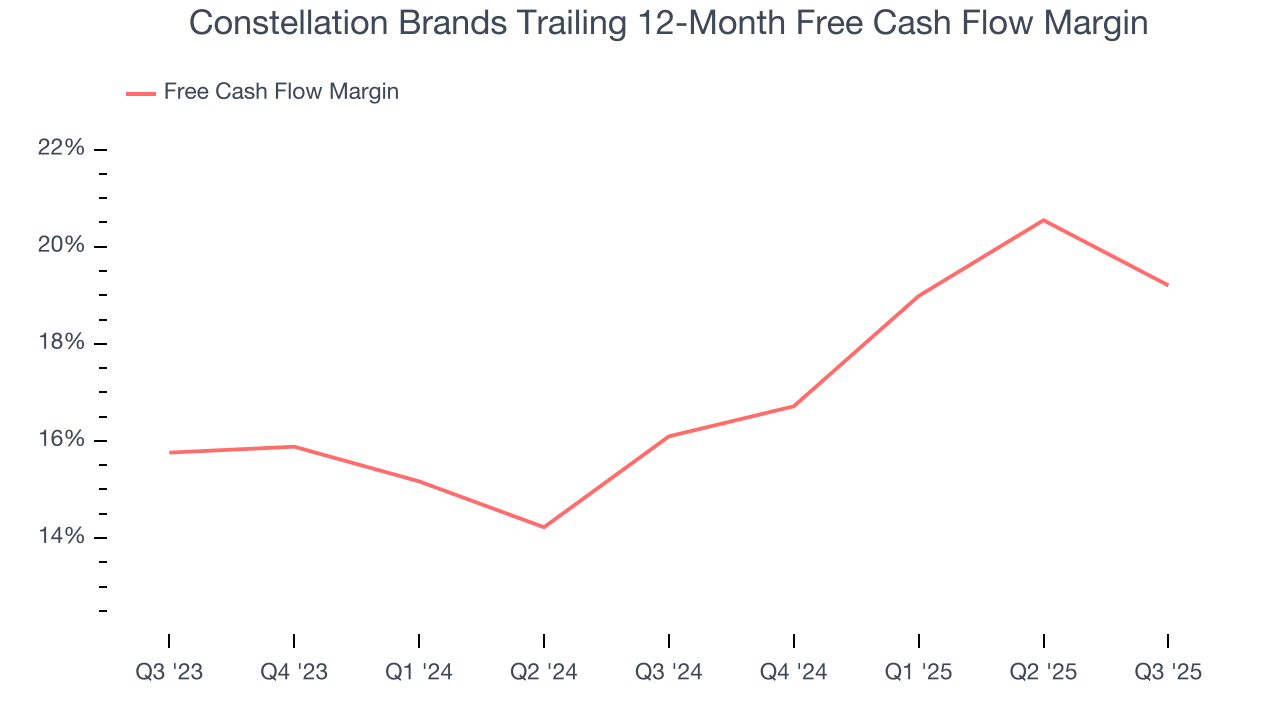
Constellation Brands’s free cash flow clocked in at $634.8 million in Q3, equivalent to a 25.6% margin. The company’s cash profitability regressed as it was 3.7 percentage points lower than in the same quarter last year, but it’s still above its two-year average. We wouldn’t read too much into this quarter’s decline because investment needs can be seasonal, causing short-term swings. Long-term trends are more important.
11. Return on Invested Capital (ROIC)
EPS and free cash flow tell us whether a company was profitable while growing its revenue. But was it capital-efficient? Enter ROIC, a metric showing how much operating profit a company generates relative to the money it has raised (debt and equity).
Constellation Brands historically did a mediocre job investing in profitable growth initiatives. Its five-year average ROIC was 9.5%, somewhat low compared to the best consumer staples companies that consistently pump out 20%+.
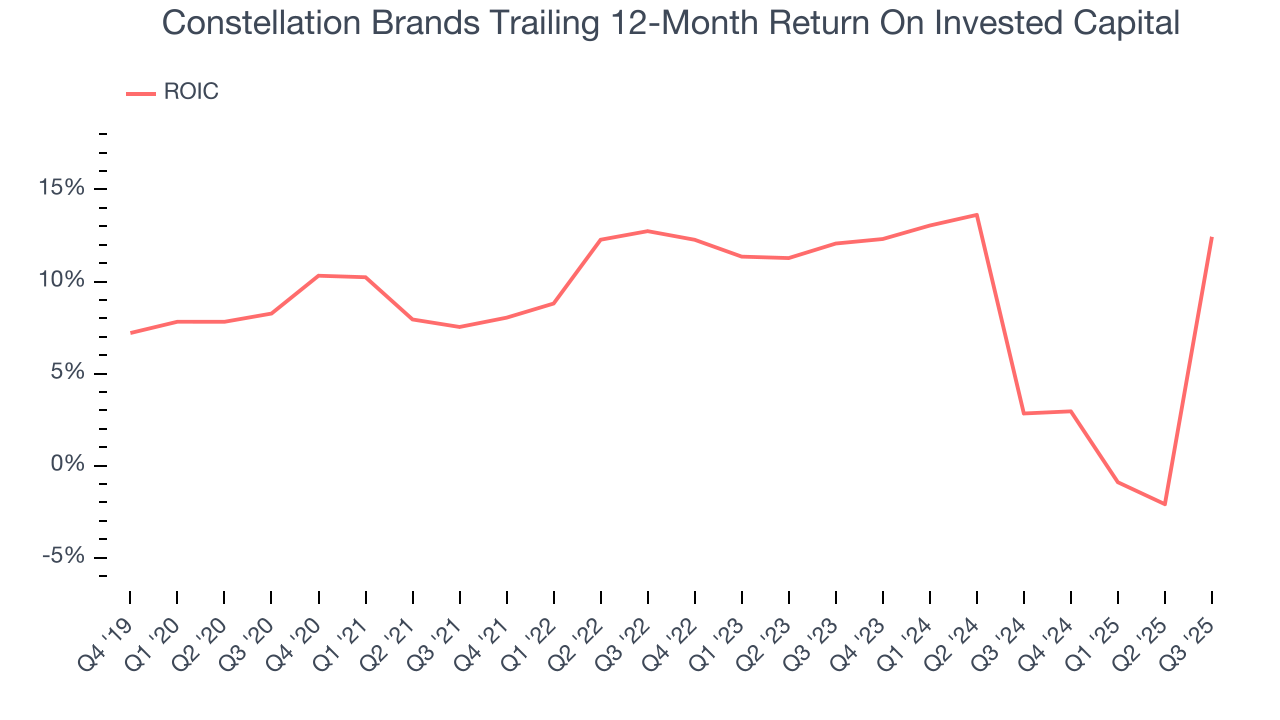
12. Balance Sheet Assessment
Constellation Brands reported $72 million of cash and $10.54 billion of debt on its balance sheet in the most recent quarter. As investors in high-quality companies, we primarily focus on two things: 1) that a company’s debt level isn’t too high and 2) that its interest payments are not excessively burdening the business.
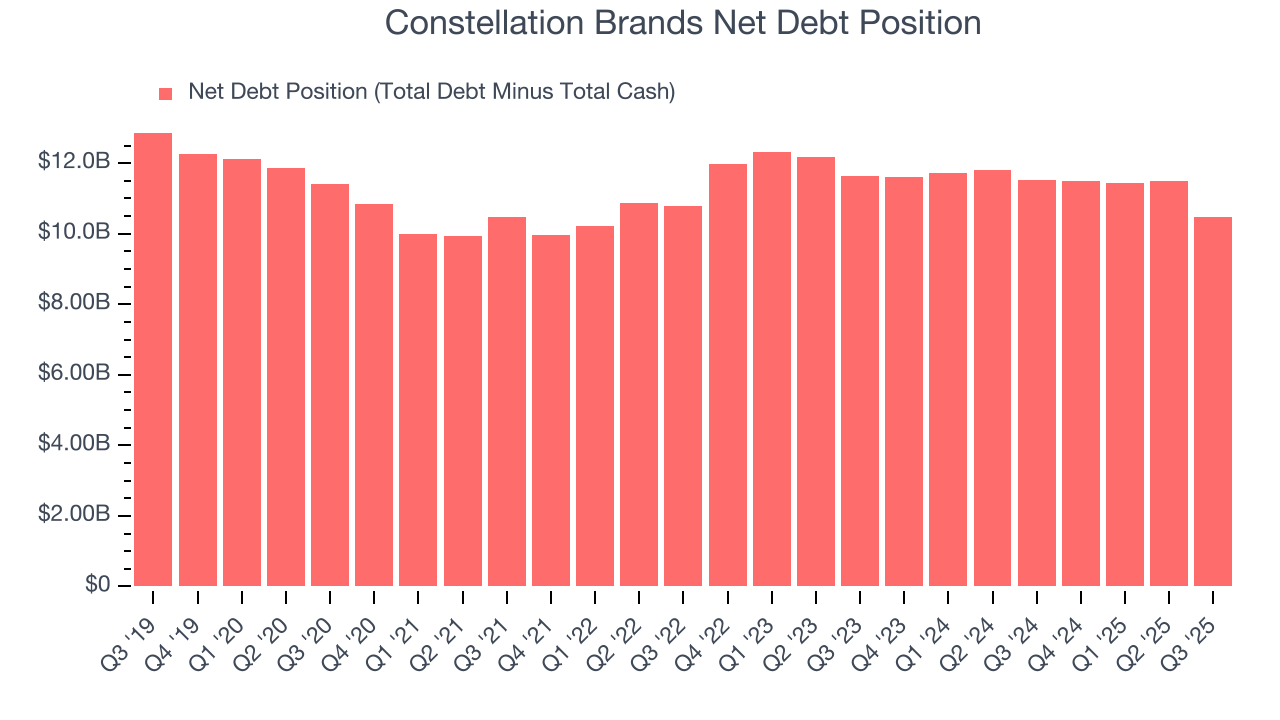
With $3.62 billion of EBITDA over the last 12 months, we view Constellation Brands’s 2.9× net-debt-to-EBITDA ratio as safe. We also see its $215.9 million of annual interest expenses as appropriate. The company’s profits give it plenty of breathing room, allowing it to continue investing in growth initiatives.
13. Key Takeaways from Constellation Brands’s Q3 Results
It was encouraging to see Constellation Brands beat analysts’ organic revenue and EPS expectations this quarter. On the other hand, full-year organic revenue and EPS guidance was lowered. Still, the market seemed to forgive the guidance and instead focus on the beats in the quarter. The stock traded up 3.8% to $144.01 immediately after reporting.
14. Is Now The Time To Buy Constellation Brands?
Updated: December 24, 2025 at 9:55 PM EST
When considering an investment in Constellation Brands, investors should account for its valuation and business qualities as well as what’s happened in the latest quarter.
Constellation Brands isn’t a terrible business, but it isn’t one of our picks. To begin with, its revenue growth was weak over the last three years, and analysts expect its demand to deteriorate over the next 12 months. And while Constellation Brands’s powerful free cash flow generation enables it to stay ahead of the competition through consistent reinvestment of profits, its projected EPS for the next year is lacking.
Constellation Brands’s P/E ratio based on the next 12 months is 11.7x. This valuation multiple is fair, but we don’t have much faith in the company. We're fairly confident there are better investments elsewhere.
Wall Street analysts have a consensus one-year price target of $170.70 on the company (compared to the current share price of $140.25).
Although the price target is bullish, readers should exercise caution because analysts tend to be overly optimistic. The firms they work for, often big banks, have relationships with companies that extend into fundraising, M&A advisory, and other rewarding business lines. As a result, they typically hesitate to say bad things for fear they will lose out. We at StockStory do not suffer from such conflicts of interest, so we’ll always tell it like it is.

